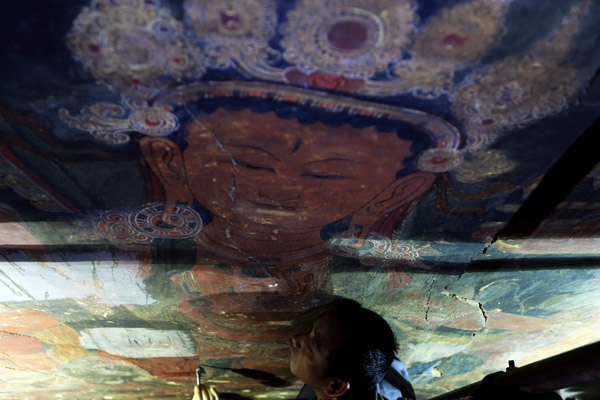 |
|
A conservationist cleans a wall painting inside the Drepung Monastery. [Photo by Cui Mmeng/China Daily] |
Over 100 monks have received the degree in Tibet since 2005.
"Those monks who study sutras are the future of any monastery," says Ngawang Kunqing, head of the institute's Drepung branch.
"So, it's important to take care of them."
Monks with excellent conduct and academic performance can study at the institute, which recruited its first batch of 150 monks in 2011.
"To acquire the highest degree isn't easy," says Ngawang Chupa, a sutra teacher from Ganden Monastery. It took him 32 years to obtain his geshe lharampa. He now teaches sutras to more than 100 monks in four classes.
Dharma assemblies are still the most important activity at monasteries.
Sera Monastery begins an assembly at 6 am on the anniversary of Buddha's birth, when more than 500 monks chant sutras together. It's a grand sight.
Monasteries-big and small-hold traditional ceremonies as they have for centuries on auspicious days of the Tibetan calendar.
Tsurphu Monastery stages 38 such ceremonies a year. Sera and Drepung monasteries hold even more.
Tibet hosts 1,787 religious-activity sites and over 46,000 resident Buddhist monks and nuns, who offer on-site services such as weddings and funerals, an official survey shows.
"These services not only meet Tibetans' religious needs but also are the responsibility of the monks," says Dorje Tsering, from Xigaze city's religion bureau.